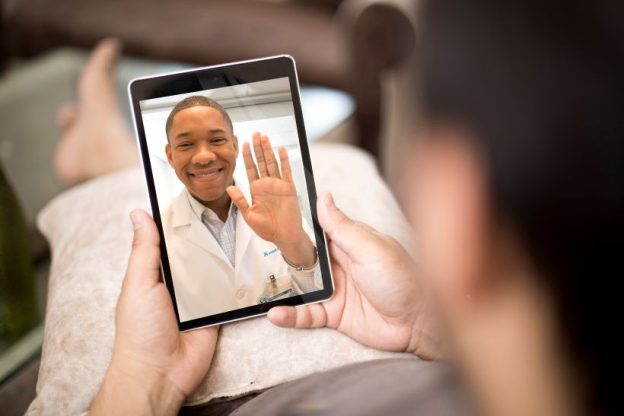
Los Angeles wildfires increased virtual medical visits
In January 2025, when wildfires swept from the foothills above Los Angeles into the densely populated urban areas below, evacuations ensued and a thick layer of smoke spread across the region. Air quality plummeted. The number of virtual visits soared and in-person visits also increased.
Research led by Kaiser Permanente Southern California and the University of Washington sheds new light on how the Los Angeles fires affected people’s health, and how people navigated the health care system during the emergency.
The study was published on Nov. 26, 2025, in JAMA Health Forum.
Research findings valuable for effective planning
“We are seeing climate threats increasing alongside shifts in health care utilization patterns,” said study author Sara Y. Tartof, PhD, MPH, an epidemiologist with the Kaiser Permanente Southern California Department of Research & Evaluation. “Research of this kind is extremely valuable in equipping health care organizations to formulate effective response strategies.”
Researchers analyzed the health records of 3.7 million Kaiser Permanente members of all ages living in the Southern California region.
They found that in the week after the fires ignited:
• Kaiser Permanente members in Southern California made 42% more virtual visits for respiratory symptoms than would be typical.
• In-person outpatient visits for respiratory symptoms also increased over 25%.
• Those living near a burn zone or within Los Angeles County also made 44% and 40% more virtual cardiovascular visits, respectively, than expected.
• Those who lived near a burn zone or within Los Angeles County made 27% and 31% more virtual cardiovascular visits, respectively, than expected.
Based on data from all insured county residents, researchers estimated there were 15,792 additional cardiovascular virtual visits, 18,489 respiratory virtual visits, and 27,903 respiratory outpatient visits during the initial week of the fires.
The results suggest that people may rely more heavily on virtual health care during climate-related emergencies, and that providers should better prioritize virtual and telehealth services as they prepare for future crises.
Wildfires led to substantial increase in health care utilization
To learn about how the fires affected health care utilization, researchers analyzed the health records of people who were highly or moderately exposed to wildfires. They defined high exposure as living within about 12 miles of a burn zone, and moderate exposure as living within Los Angeles County but farther than 12 miles during the time of the fires.
Researchers looked back 3 years to estimate how many health care visits to expect in the weeks following January 7 — the first day of the fires — under typical conditions. They then estimated how many people sought care in the first week of the fires, when smoke levels were highest, evacuations took place, and Los Angeles County public schools were closed.
“We saw over 6,241 excess cardiorespiratory virtual visits in the week following the fire ignition. This represents a substantial increase in care,” said the study’s lead author, Joan Casey, a University of Washington associate professor of environmental and occupational health sciences. “While the fires clearly impacted health, virtual care likely enhanced the ability of providers to meet the health care needs of people experiencing an ongoing climate disaster.”
Wildfires also brought spike in injuries
In addition to the significant rise in cardiovascular and respiratory visits, researchers found a sharp increase in the number of visits for injuries and neuropsychiatric symptoms.
On January 7, outpatient injury visits were 18% higher than expected among highly exposed members, and virtual injury visits were 26% and 18% higher than expected among highly and moderately exposed groups, respectively. Among those same groups, outpatient neuropsychiatric visits rose 31% and 28% above expectations, respectively.
While both groups made significantly more visits than expected, proximity to the fires mattered. When researchers zoomed in on respiratory-related virtual visits, they found that minimally exposed members made 31% more visits, moderately exposed members made 36% more, and those living in highly exposed areas made 42% more.
Other Kaiser Permanente authors on this study include Yuqian M. Gu, MS, and Gina Lee, MPH, of the Kaiser Permanente Southern California Department of Research & Evaluation; and Timothy Frankland, MA, of Kaiser Permanente Hawaii.





